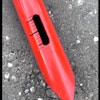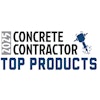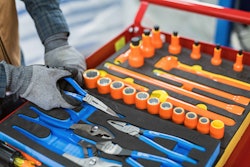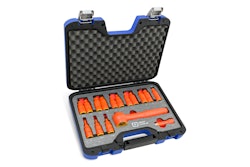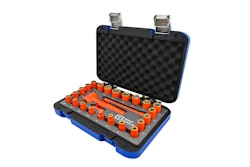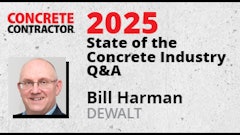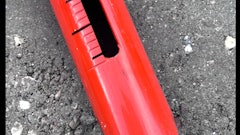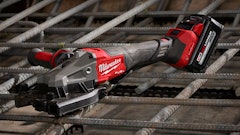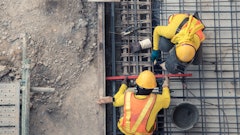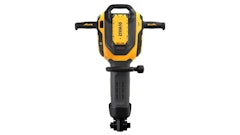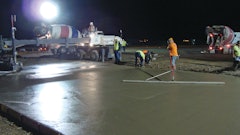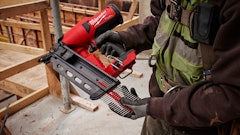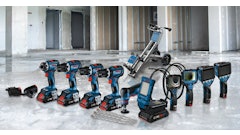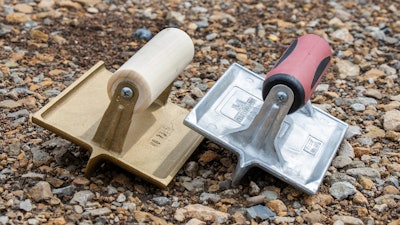
Bronze tools are the trusted means of achieving radius edges and straight control joints in concrete. Their rugged construction has the optimal weight distribution to provide professional quality results. For that reason, bronze tools are often fundamental for many concrete finishers. Yet this preference comes at a price. The monetary and human cost of bronze production is taking its toll on the industry, but it doesn’t have to. There is an alternative material available—zinc.
Although they differ in composition, bronze and zinc share similar properties. They rival each other in terms of hardness, durability, quality construction, and professional finish results. Zinc, however, has a few added perks.
Zinc production offers relief to the pocketbooks of contractors and manufacturers. For every bronze tool produced, two zinc tools can take its place. This results in less money wasted on tools that provide identical results. Plus, it’s safer for manufacturers to produce. By shifting market preference toward zinc, both contractors and manufacturers will benefit.
Composition & Properties
A close look at the composition shows that bronze is an alloy of copper that has been in use for over 5,000 years. At the crux of the Bronze Age, it was the hardest and most versatile common metal known to humankind, producing better tools, weapons, armor, and other materials humans needed to survive.
It is typically a combination of copper and tin, aluminum, or nickel (among others). Most concrete tools are 88-90% copper and 10-12% tin. This composition is great for tools due to its strength, hardness, and very high ductility. These properties also provide a high load-carrying capacity, good wear resistance, and offer high durability. Unfortunately, it is also prone to corrosion.
With enough air exposure, a bronze tool can oxidize and turn green. This green layer, called patina, is often the first sign of wear. The patina can act as a protective barrier, but if chlorides are present (as from seawater, soil, or sweat), these tools can develop “bronze disease.” This is the death of a cuprous (copper-based) tool. It is a contact-contagious condition that works through the metal and destroys it. Once this happens, there is little chance to stop it.
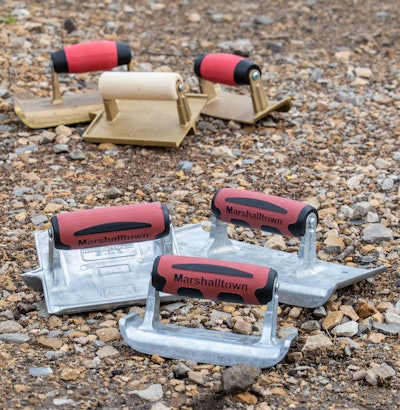 Zinc suppliers are based in the U.S., limiting outsourced work. Not only does this bring more skilled jobs to the States but also significantly lowers the cost of production and retail value.MARSHALLTOWN Company
Zinc suppliers are based in the U.S., limiting outsourced work. Not only does this bring more skilled jobs to the States but also significantly lowers the cost of production and retail value.MARSHALLTOWN Company
Because zinc is non-cuprous, allows it to avoid "bronze disease." Instead, it is a metallic element with its own square on the periodic table that features a hexagonal close-packed (hcp) crystal structure. It also possesses moderate hardness and can be made ductile and easily worked at temperatures slightly above the ambient.
Side by side, bronze, and zinc both have a hardness that is ideal for tools (on the Mohs Scale of Hardness for Metals, zinc = 2.5; bronze = 3).
For concrete finishers, this means that, with regards to composition, the difference between bronze and zinc is slim to none. Both provide concrete tools with a high load-carrying capacity, good wear resistance, and the ability to produce virtually identical finish results. Zinc just doesn’t carry all the same drawbacks—it’s lightweight, easy to use, resistant to bronze disease, and cost-effective.
The Cost of Production
The monetary and human cost of production is where bronze and zinc significantly diverge.
Bronze production relies on two methods of production (sand-casting and die-casting), but neither are cost-effective for manufacturers. The result is manufacturers potentially passing this financial hardship onto contractors.
Sand-casting, as its name suggests, involves pouring molten bronze into a single-use mold imprinted in sand. Because the mold is single-use, manufacturers must replace or reform the mold for every tool. This process takes time, which leads to fewer tools being produced and results in bronze tools costing more as supply fails to match constant demand.
Die-casting, on the other hand, is not single-use. Once the liquid metal is poured into the metal mold, solidified, and removed, the die is again ready for immediate use. The only downside to this approach for manufacturers is the fact that a single die-cast mold can cost upwards of hundreds of thousands of dollars.
Regardless of which casting method manufacturers choose to use, both involve grinding and deburring. This gives bronze tools their smooth, shelf- and job-ready finish. Unfortunately, this process comes with a human cost.
Grinding and deburring, a crucial component of bronze tool production, creates dust that requires immediate filtration or ventilation. Without this, workers can develop a condition known as pneumoconiosis or “dusty lung,” a condition that causes scar tissue to build up in the lungs and can lead to serious, chronic lung problems.
Although these health issues are typically centered in the lungs, other organs are also at risk. Some particles have the potential to dissolve into the bloodstream, giving them the ability to travel throughout the body to affect the liver, kidneys, or even the brain. Because of these hazardous conditions, some US-based manufacturers are no longer willing to put their workers at risk. Instead, this work is outsourced. But even those outsourced manufacturers are calling for an end to bronze production and the grinding involved.
With fewer manufacturers at home and abroad producing bronze, bronze tools will be harder to acquire, driving prices to unreasonable amounts.
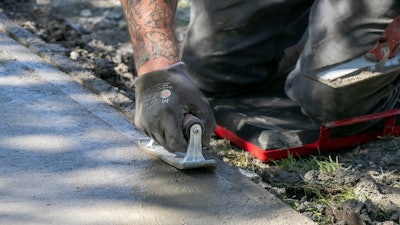 For concrete finishers, the difference between bronze and zinc is slim to none. Both provide concrete tools with a high load-carrying capacity, good wear resistance, and the ability to produce virtually identical finish results. Zinc just doesn’t carry all the same drawbacks—it’s lightweight, easy to use, resistant to bronze disease, and cost-effective.MARSHALLTOWN Company
For concrete finishers, the difference between bronze and zinc is slim to none. Both provide concrete tools with a high load-carrying capacity, good wear resistance, and the ability to produce virtually identical finish results. Zinc just doesn’t carry all the same drawbacks—it’s lightweight, easy to use, resistant to bronze disease, and cost-effective.MARSHALLTOWN Company
Zinc production, on the other hand, doesn’t carry these same costs. This is due in part to the development of the rapid quenching zinc-lead blast furnace in the 1960s, which uses shock-cooling and vapor absorption to produce zinc. The result is a multitude of benefits for both manufacturers and consumers which include:
- The low working temperatures lead to rapid cooling of the cast products and fast production for assembly.
- Casting methods are more precise, which eliminates the need for grinding and deburring. It also helps to produce a better, smoother, and more crisp finish on the edges and control joints of concrete slabs.
- Zinc suppliers are based in the U.S., so work no longer has to be outsourced. Not only does this bring more skilled jobs to the States. This also significantly lowers the cost of production and (subsequently) retail value.
Switching to Zinc Benefits Everyone
Zinc rivals bronze in every way. Both share a high load-carrying capacity and good wear resistance, which are ideal for concrete work, while zinc takes it a step further with immunity to bronze disease and a lighter, easier-to-use profile that provides contractors with similar results.
This also comes at a fraction of the cost of bronze tools. Zinc cuts the cost of production by being U.S.-based, more precise, and eliminating the need for grinding and deburring.
Not only does this save their workers from dusty lung and other serious health conditions, but this means that manufacturers can also produce more for less. These savings are then passed on to the contractor, helping them save money on quality tools.
With all these benefits, it might be time for the industry to leave the Bronze Age of concrete tools and embrace a zinc-colored future.
About the author
Megan Rachuy is the content writer and editor for MARSHALLTOWN, a world leader in manufacturing hand tools and construction equipment for various industries. As the resident writer, she authors DIY and pro-related content for the MARSHALLTOWN DIY Workshop blog.


